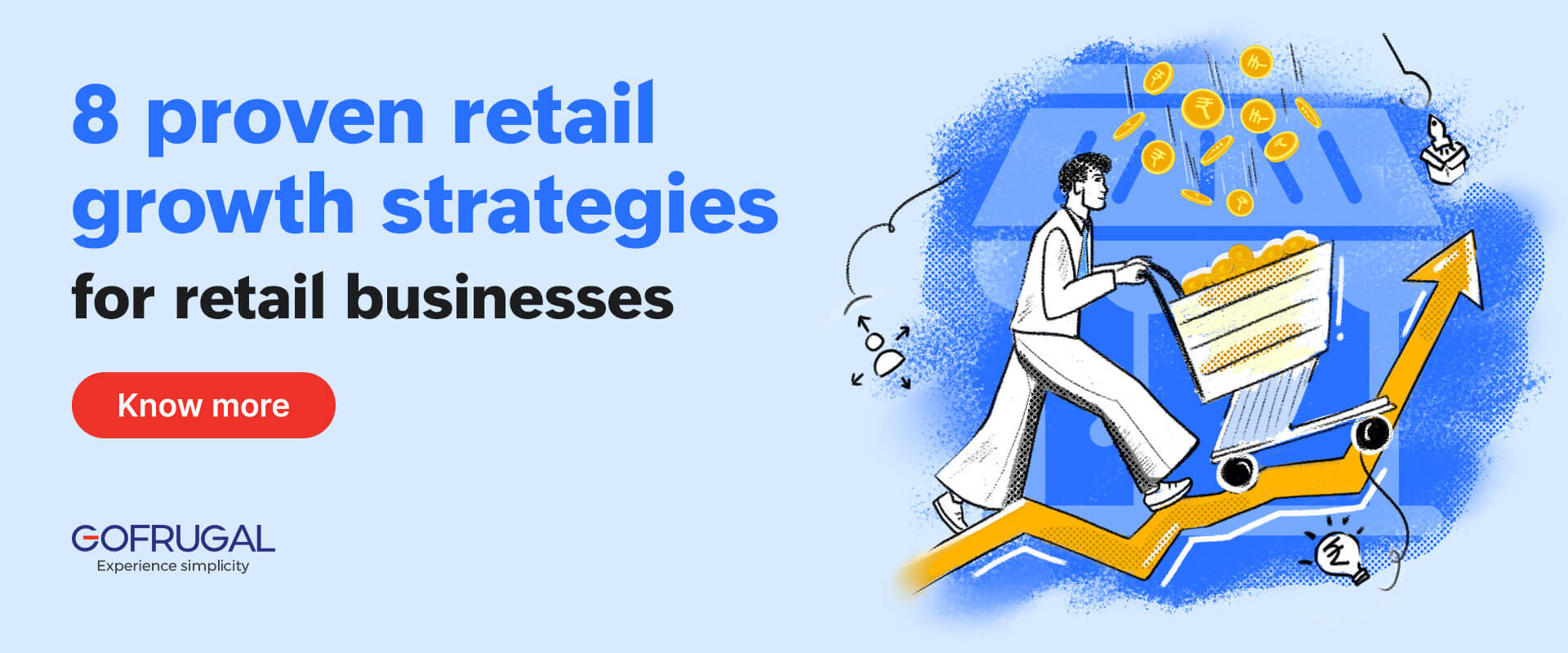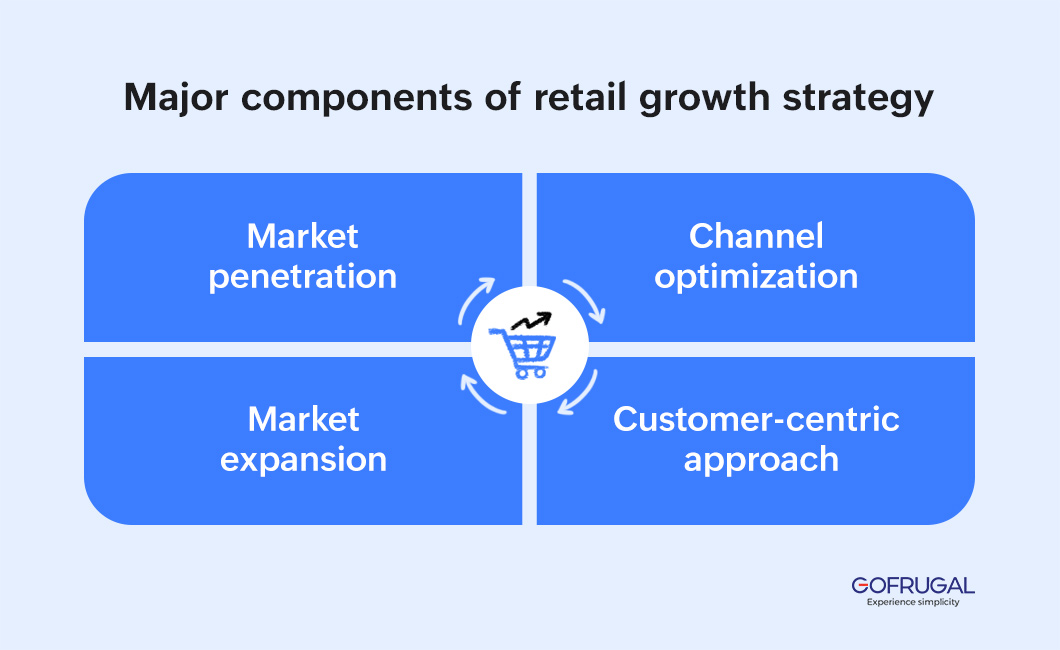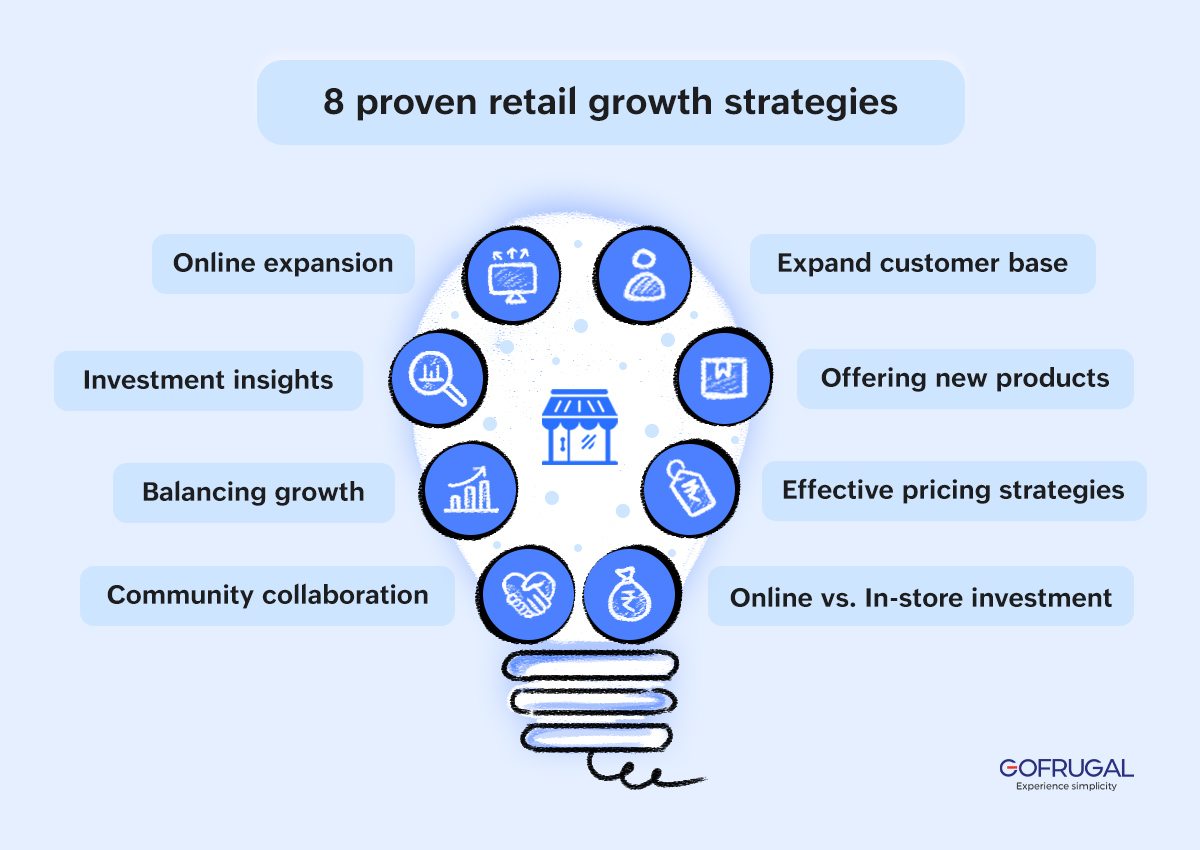Picture this: You're the owner of a retail store. You've put your heart and soul into it, but lately, you've noticed sales plateauing, foot traffic dwindling, and competitors gaining ground. In such a scenario, having a robust growth strategy isn't just a luxury, it's a lifeline. It's your navigation tool for challenges and steers your business towards sustainable success. But what exactly is a retail growth strategy, and why is it more critical now than ever?
What is retail growth strategy?
Retail growth strategy is a plan of action designed to expand a retail business's market share, increase revenue, and achieve sustainable success. It encompasses various tactics and approaches aimed at attracting new customers, retaining existing ones, and adapting to evolving market trends.
The importance of retail growth strategy
Having a solid growth strategy is more critical than ever. It provides retailers with a roadmap for navigating challenges, seizing opportunities, and staying ahead of the curve. Without a clear growth strategy, businesses risk stagnation, irrelevance, and ultimately, failure.
Major components of retail growth strategy
Now, let's break down the key components that make up a robust retail growth strategy.
- Market penetration: This involves increasing market share within existing markets by attracting new customers or persuading existing ones to buy more. Strategies may include aggressive marketing campaigns, promotional offers, and improved customer service.
- Channel optimization: Maximize revenue streams by optimizing sales channels, including online platforms and local distribution networks. Streamline omnichannel operations to ensure consistent product availability and pricing across various touchpoints.
- Market expansion: Expanding into new markets or segments is crucial for sustained growth. This involves targeting different demographics, geographic regions, or distribution channels, requiring thorough market analysis and strategic planning. Customer testimony plays a critical role in this process, serving as a method to increase market expansion by showcasing positive experiences and building trust with potential customers.
- Customer-centric approach: Focus on improving overall customer experience to drive loyalty and repeat business. Manage customer interactions effectively, offering personalized communication and attentive service.
8 proven retail growth strategies
Growing your customer base
Expanding your customer base involves various strategies, such as personalized marketing campaigns, loyalty programs, and excellent customer service. Utilizing data analytics to understand customer preferences and behavior allows for targeted marketing efforts. Implementing strategies to enhance customer experience, such as offering flexible payment options and hassle-free returns, also contributes to building long-lasting relationships with customers.
Offering new products
In addition to identifying market gaps, retailers can leverage social media and customer feedback to understand emerging trends and preferences. Collaborating with suppliers and manufacturers to develop exclusive products or private labels can differentiate offerings from competitors. Moreover, conducting product launch events and creating compelling product stories can generate excitement and anticipation among customers, driving adoption and sales.
Implementing effective pricing strategies
Dynamic pricing tools and competitor analysis help retailers adjust prices in real time, optimizing revenue while remaining competitive. Offering discounts and promotions strategically, such as during seasonal sales or in conjunction with marketing campaigns, can stimulate demand and encourage purchases.
Evaluating online vs. in-store investment
Understanding the advantages and challenges of online and in-store retail is essential for making informed investment decisions. While online channels offer broader reach and lower operational costs, physical stores provide opportunities for immersive brand experiences and immediate product gratification. Implementing click-and-collect services or showrooming options can bridge the gap between online and offline shopping experiences, catering to diverse consumer preferences.
Online expansion
Expanding your online presence requires effective digital marketing strategies, including social media marketing and targeted advertising. Leveraging ecommerce platforms offers access to a vast customer base and built-in marketing tools, streamlining the process of setting up and managing online stores. Additionally, integrating with platforms, such as ONDC (Open Network for Digital Commerce), can further enhance online sales opportunities by connecting with a broader network of buyers and streamlining the shopping experience.
Strategic investment insights
Apart from usual research, retailers can use data and smart tools to predict what customers will buy and when. It's like guessing the future of shopping based on past behavior. Instead of putting all your eggs in one basket, consider broadening your options and investing resources into different things that can increase your revenue. This could mean selling new things or reaching out to different types of customers. It's like planting different seeds to see what grows best.
Balancing growth for long-term success
Maintaining financial discipline and optimizing operational efficiency are crucial for long-term success. Implementing cost-saving measures, streamlining supply chain processes, and investing in employee training and development contribute to sustainable growth. Prioritizing innovation and agility allows retailers to adapt to evolving market dynamics and consumer preferences, ensuring resilience in competitive environments.
Community collaboration
Engaging with local communities through events, sponsorships, and charitable initiatives strengthens brand identity and fosters customer loyalty. Collaborating with non-competing businesses for cross-promotions or co-branded events expands reach and attracts new customers. Additionally, supporting social causes aligned with brand values demonstrates corporate responsibility and builds trust with customers.
Tips for overcoming common challenges in executing growth strategies
Common challenges
- Limited resources: Businesses often struggle with inadequate finances, workforce, and technology, hampering their ability to execute growth strategies effectively. To overcome this, prioritize investments based on potential impact, leverage cost-effective solutions, and consider outsourcing non-core activities.
- Competition: The retail sector is fiercely competitive, with numerous players competing for market share and customer attention. To stand out, businesses should focus on differentiating through value propositions, emphasizing unique selling points, and providing exceptional customer experiences.
- Changing market dynamics: Markets are dynamic, influenced by shifting consumer behaviors, technological advancements, and economic factors. Adapting quickly is crucial; businesses should stay informed about market trends, embrace innovation, and remain agile in their strategies.
- No clear strategy: Without a well-defined growth strategy, businesses face confusion and inefficiency. To avoid this, develop a clear vision, set measurable goals, and establish a roadmap outlining actionable steps.
- Not tracking results: Implementing growth strategies without testing their effectiveness can lead to missed opportunities. Monitoring and analyzing the outcomes of growth initiatives are essential for identifying areas of improvement.
Practical tips and strategies
- Optimize resource allocation: Optimizing resource allocation is vital, and robust ERP software is instrumental in achieving this goal. By streamlining operations, managing inventory efficiently, and enabling data-driven decisions, it identifies growth opportunities and allocates resources effectively. Through automation and reducing manual effort, the software frees up resources for strategic initiatives, ensuring sustainable growth and maintaining a competitive edge.
- Differentiate through value proposition: Identify unique selling points and emphasize them in marketing efforts to distinguish your brand from competitors.
- Embrace innovation: Stay abreast of market trends and emerging technologies, experimenting with new products, services, and marketing strategies to stay ahead of the curve.
- Track progress: Implement robust measurement and tracking mechanisms to monitor the performance of growth initiatives, allowing for timely adjustments and optimizations based on data-driven insights.
- Test and iterate: Conduct thorough testing and experimentation to validate assumptions and refine strategies iteratively, minimizing risks and maximizing the effectiveness of growth efforts.
How Gofrugal helps retailers plan their growth strategy
- Customer relationship management (CRM): Gofrugal's CRM module aids retailers in managing customer interactions effectively, offering features like customer database management and personalized communication tools.
- Precise inventory management: With Gofrugal, retailers access robust inventory management and analytics, so they can track inventory levels and perform analyses on market demands for product innovation.
- Omnichannel integration: Gofrugal provides comprehensive solutions for seamless shopping experiences across various channels, ensuring consistency in product availability and pricing.
- Data-driven decision-making: Gofrugal empowers retailers with analytics for real-time insights into sales performance and customer behavior, facilitating informed decisions.
- Collaboration and partnerships: Gofrugal facilitates collaboration through purchase management and partnership programs, enabling efficient procurement and strategic alliances for market expansion.
In conclusion, a well-defined retail growth strategy isn't just a buzzword; it's the cornerstone of a thriving business. By understanding its components, implementing proven strategies, and leveraging the right tools like Gofrugal, retailers can chart a course towards expansion, increased revenue, and long-term success. Remember, in the ever-evolving world of retail, adaptability and innovation are key. So, whether you're a seasoned retail veteran or just starting out, investing in a solid growth strategy could be the difference between merely surviving and truly thriving in the competitive retail landscape.




